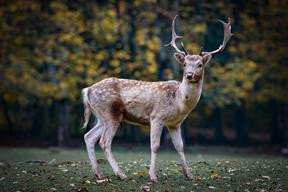Based on a new findings, the coronavirus appears to have infected many of Iowa's deer population, raising the possibility that the virus could mutate in the animals and subsequently re-enter the human population in a modified form.
The paper, which has been released online but has not yet been published in a peer-reviewed journal, shows deer have the potential to become a major reservoir host for the coronavirus.
Federal experts at the National Veterinary Services Laboratories confirmed the results Tuesday, a spokesman who talked to the New York Times.
The study surprised the scientists, particularly the Penn State study's leaders, veterinary microbiologists Vivek Kapur and Suresh Kuchipudi.
The current study focuses on deer in Iowa, but there's no reason to suppose the same phenomenon "isn't happening in other places where deer are present," the authors said.
Iowa's state wildlife veterinarian, Rachel Ruden, assisted in the writing of the report. It's unclear how deer picked up the disease from humans and then spread it among themselves, she told the Times.
"All of this is a remarkable example of how we're all caught up in this pandemic," she said in quotes by USA Today.
In light of the research findings, Iowa Department of Natural Resources representative Tammie Krausman said her department is not advising any specific measures.
The study included researchers from the Iowa Department of Natural Resources, Penn State University, and Iowa State University.
From April 2020 to January 2021, scientists studied lymph node samples from 283 deer killed by hunters, struck by cars, or harvested at game farms. Coronavirus infection had been found in more than 30% of animals tested.
As the pandemic among humans deteriorated last year, the diseases appeared to become more prevalent. The coronavirus was found in 80% of 97 samples obtained from deer between November 23, 2020, and January 10, the study shows.
There is no indication that deer can transmit the coronavirus to people. However, the study's authors are concerned about the virus's persistence in Iowa's animals and the possibility of a species acting as "animal reservoir."
Reservoirs form when a virus mutates in a new host - such as a deer - and then infects humans with new strains, resulting in sickness.






